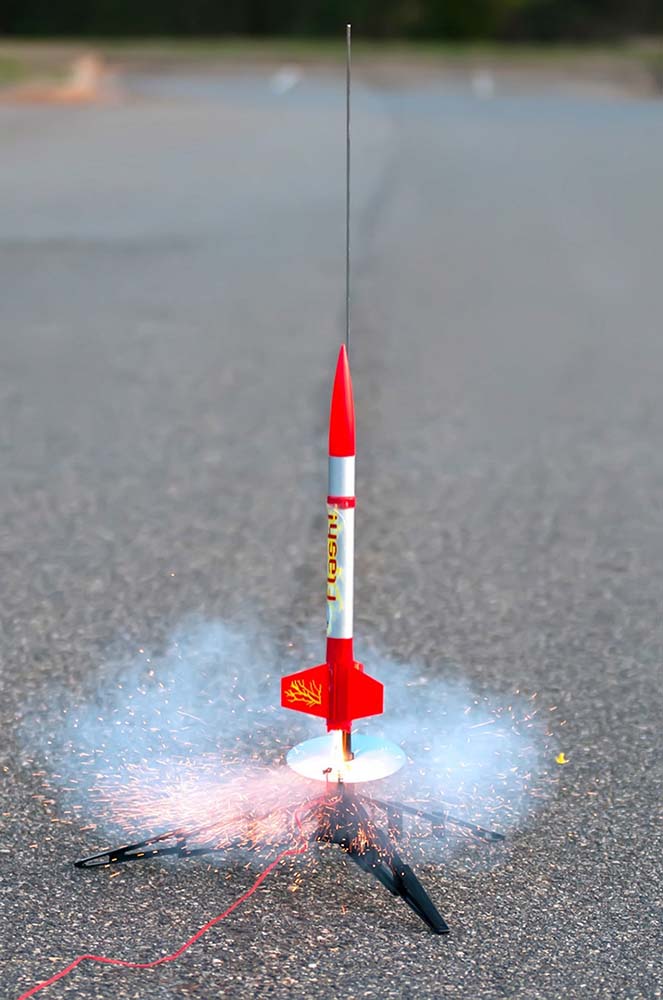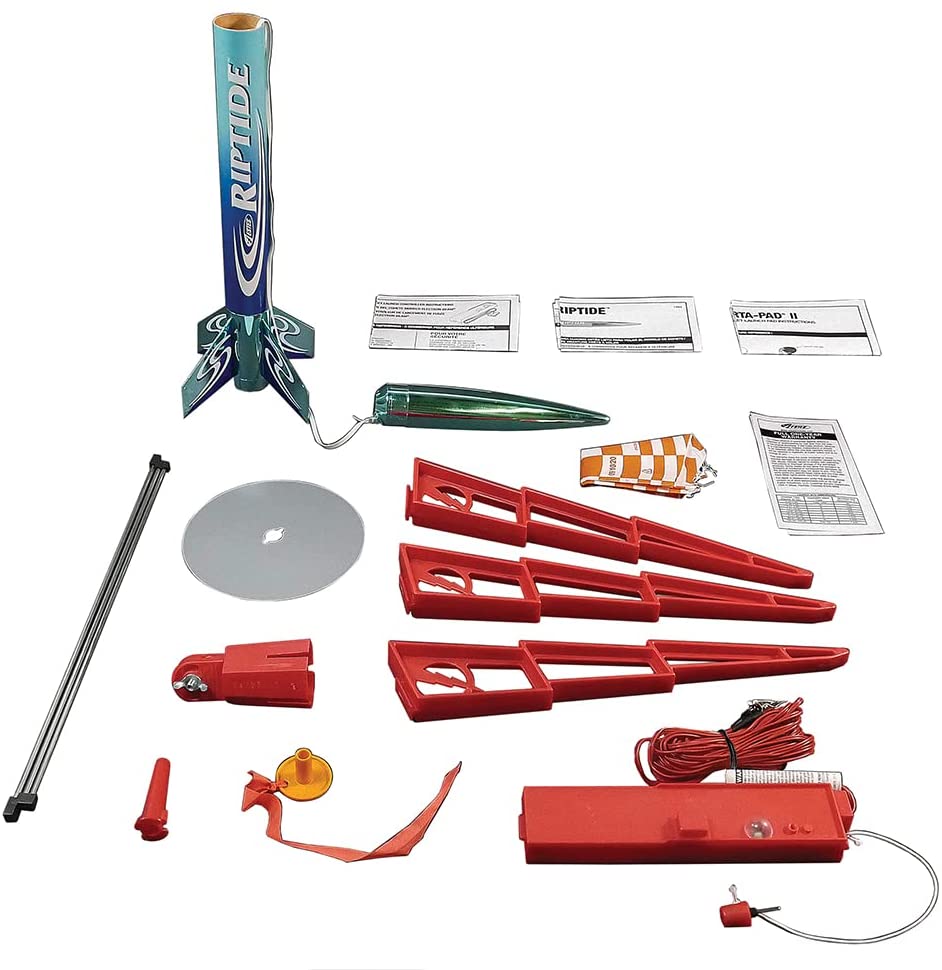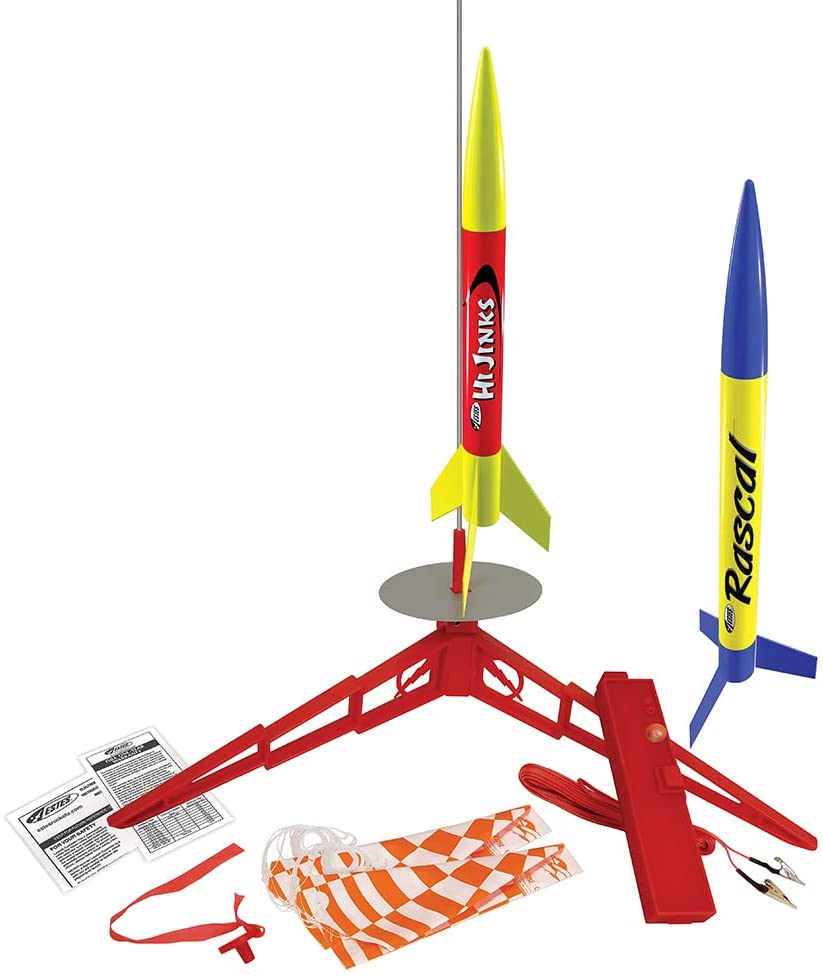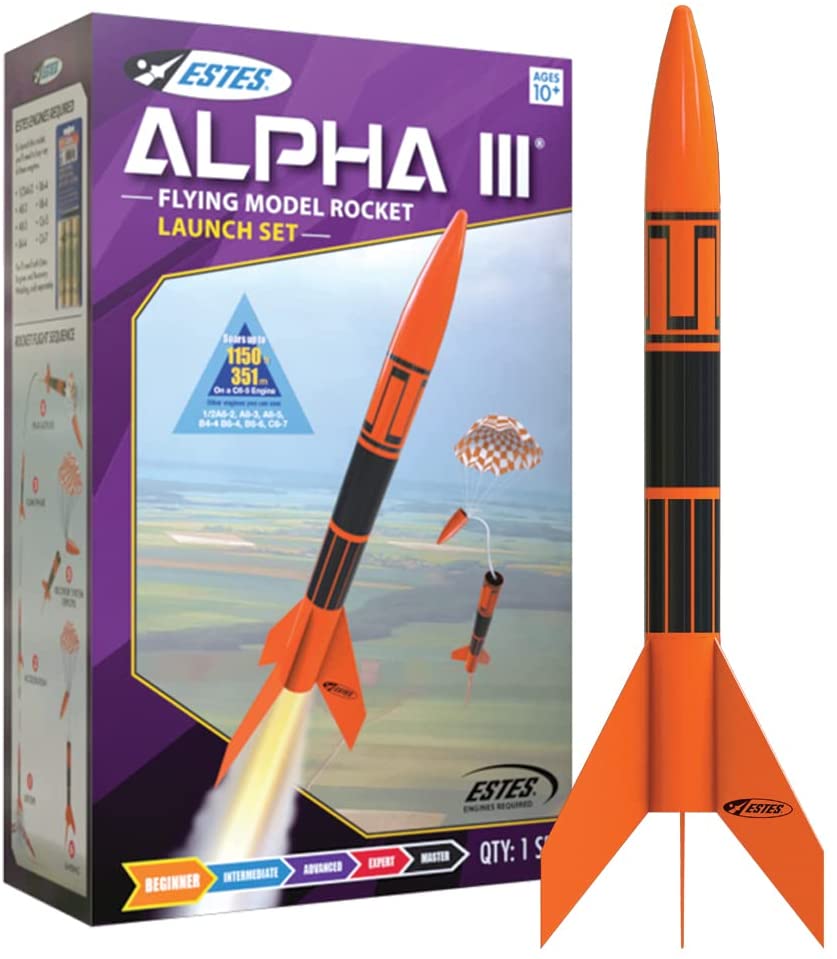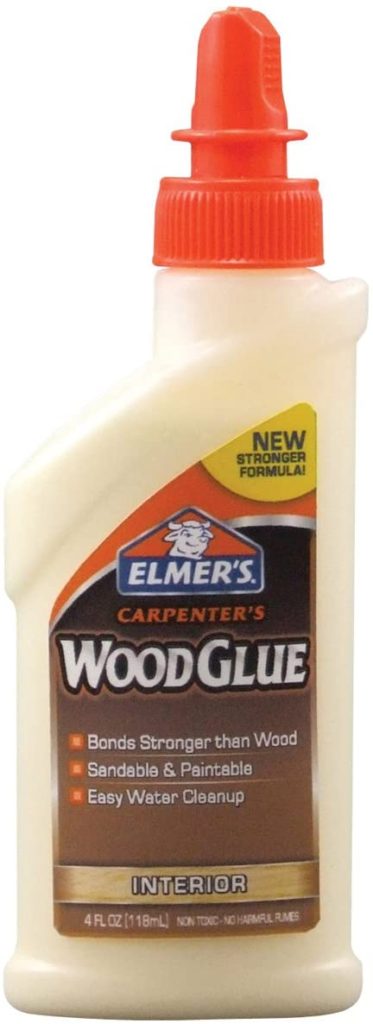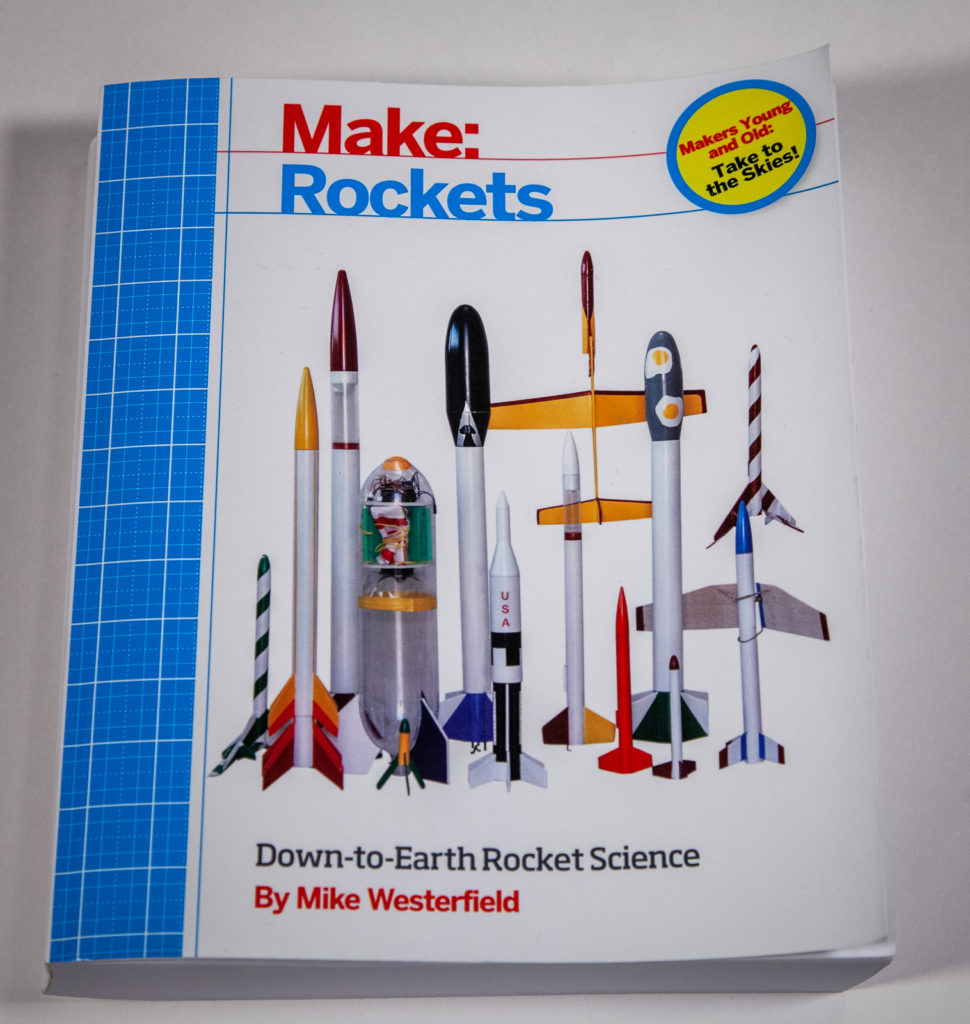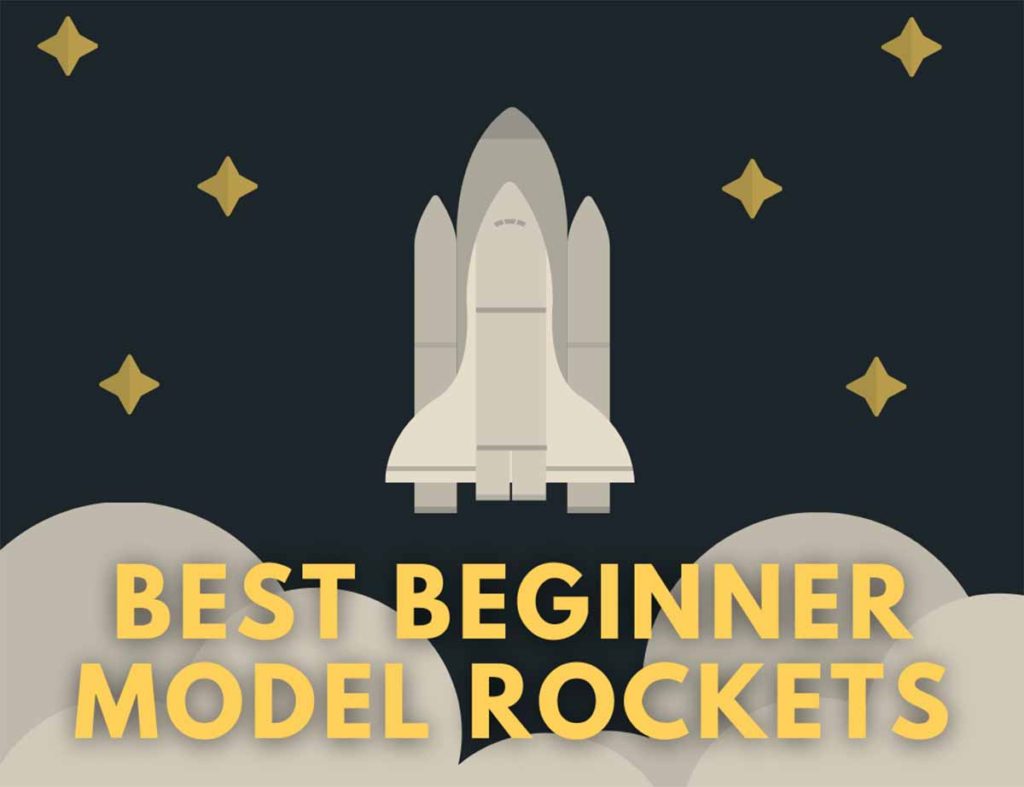
We may receive commissions from purchases made through links in this post, at no additional cost to you.
I loved building model rockets as a kid. I loved the whole process from building it, painting it, and of course launching it. And while life has forced me to take a break from my childhood hobby, I’m beyond excited about my kids being old enough to teach them how to launch their first rockets.
But as I reenter the field of model rocketry, I’ve noticed that it’s changed quite a bit from when I last picked whatever cool kit was at the local hobby shop. Suddenly the fiddly balsa fins are no longer the only option.
Thus began my next deep dive, this time into the world of rockets.
Types of Beginner Rockets
There are some great companies out there making some cool rockets right now (check out https://www.apogeerockets.com to see some of the many kits that are on the market right now. This is not an affiliate link. They just have lots of cool stuff!) but the best place to get started with is Estes. They’ve been around forever and make a ton of model rocket kits and components that range from beginner to advanced.
The good news is Estes now labels their rocket kits into 5 levels: Beginner, Intermediate, Advanced, Expert, and Master. One of the issues I’ve noticed though is that this is a relatively new system, so if you have ever flown rockets as a kid, the new classification system is not what you grew up with. What once was a Level 1 beginner rocket, is now classified as Intermediate. It makes my head hurt too, but don’t worry, I’ve done the legwork for you and this will hopefully clear things up.
Generally, we can classify the way Estes rockets are built into four categories: Ready to Fly, Almost Ready to Fly, Snap Together, and Assembly Required. These are not categories defined by Estes, so you won’t find these labels on the kit.
Ready to Fly is just that. The rocket is completely built and ready to be prepped for launch right out of the box.
Almost Ready to Fly needs minimal assembly. The fins are in a single plastic piece that needs to be glued to the main body of the rocket. You usually need to glue an engine mount, but nothing super complicated. This would need some supervision for kids to assemble as there are important cuts that need to be made (but no fiddly balsa tail fins here).
Snap Together kits have molded plastic for the fin and engine components. Putting this together sometimes involves gluing together the engine/fin mount, but it is in some ways simpler than the Almost Ready to Fly (But not by much. I would still supervise my kiddos).
Recently Estes is updating how their snap together rockets are assembled. The older version requires gluing and the newer version does not. I have found the kits with no glue to be super easy to assemble. I’ve differentiated the two with types in the graph below.
Assembly Required involves removing laser cut balsa fins, sanding, and gluing them onto the rocket body/tube. It’s not particularly difficult, but can be tricky and the precision needed is beyond what my 8- and 6- year old kids can do. Any Estes kits that used to be classified as a Level 1 (that are Assembly Required) are now labeled as Intermediate in the new Estes classification system.
Unless you have super fond memories of gluing the fins, I wouldn’t recommend this for your first flight with young kids. Unless you and your kids really like the assembly process, I would start with one of the other types of kits and move up to this. I think Estes is right to recategorize these into the intermediate section.
If this is the route you want to go and really want to build your own, then make this your pick. If you’re adventurous enough to do this yourself, then by all means, pick out something in the intermediate level and have fun!
Below is a chart of the Beginner and Intermediate rockets made by Estes.
| Rocket Name | Estes Level | Build Type | Engine Type | Available as a set? | Brand | Notes |
| Astrocam | Beginner | Snap Together (no glue) | A8-3, B4-4, B6-4, C6-5 | yes/rocket and starter set | Estes | Includes a USB video camera |
| Blue Origin New Shepard | Beginner | Ready to fly | C5-3, C6-3 | yes/rocket and starter set | Estes | Scale model; Payload bay in nose cone |
| Cadet | Beginner | Almost ready to fly | A8-3, B4-4, B6-4, C6-7 | rocket only | Estes | Standard rocket |
| Destination Mars Leaper | Beginner | Ready to fly | A10-0T | rocket only | Estes | Looks like an action figure with a rocket engine |
| Ghost Chaser | Beginner | Snap Together (no glue) | A8-3, B4-4, B6-4, C6-5, C6-7 | rocket only | Estes | Transparent cargo section for payloads |
| Gnome | Beginner | Almost Ready to Fly | 1/4A3-3T, 1/2A3-2T, 1/2A3-4T, A3-4T, A10-3T | rocket only | Estes | Narrow body; uses mini engines |
| Illusion | Beginner | Snap Together (no glue) | A8-3, B4-4, B6-4, C6-5, C6-7 | rocket only | Estes | Standard rocket |
| NASA SLS (Space Launch System) | Beginner | Ready to fly | C5-3, C6-3 | rocket only | Estes | Scale model |
| Neon Tiger | Beginner | Snap together | B6-2, C5-3, C6-3 | rocket only | Estes | Detachable glider tube |
| Rocket Science Starter Set | Beginner | Almost ready to fly | 1/2A6-2, A8-3, B4-4, B6-4, B6–6, C6-5, C6-7 | starter set only | Estes | Only available as a starter set; includes 2 engines, starters, launch pad, ingition system, altitude tracker |
| Solo | Beginner | Snap together | B6-2, C5-3, C6-3 | rocket only | Estes | Detachable glider tube |
| Space Corps Centurion | Beginner | Ready to fly | A8-3, B4-4, B6-4, C6-5 | yes/rocket and launch set | Estes | Fictional space fighter |
| Star Hopper | Beginner | Snap together (no glue) | 1/2A3-4T, A3-4T, A10-3T | rocket only | Estes | Uses mini engines; Based on rumored 1950s secret project to counter the “flying saucer threat.” |
| Terra GLM | Beginner | Snap together | B4-4, B6-4, C6-5 | rocket only | Estes | Hypothetical ground launch missle scale model |
| Firehawk | Beginner | Snap together | 1/4A3-3T, 1/2A3-2T, A3-4T, A10-3T | rocket only | Estes | Standard rocket; thinner; uses mini engines |
| Phantom | Beginner | Almost ready to (not) fly | Display only/non-flying | rocket only | Estes | Standard rocket with all clear components; non-flying |
| Alpha III | Beginner | Almost ready to fly | 1/2A6-2, A8-3, A8-5, B4-4, B6-4, B6-6, C6-5, C6-7 | yes/rocket and launch set | Estes | Go-to beginner rocket |
| Riptide | Beginner | Ready to fly | B4-4, B6-4, C6-5 | yes/launch set only | Estes | Standard rocket |
| Journey | Beginner | Snap together | A8-3, B4-4, B6-4, C6-5, C6-7 | yes/launch set only | Estes | Standard rocket |
| Tandem-X Launch Set | Beginner | Snap together | Amazon : B4-2, B4-4, B6-2, B6-4, C6-3, C6-5 Crossfire ISX : A8-3, B4-4, B6-4, C6-5, C6-7 | yes/launch set only | Estes | Includes two rockets: Amazon (tall), Crossfire (short and fast) |
| Flash Launch Set | Beginner | Snap together (no glue) | A8-3, B4-4, B6-4, C6-5, C6-7 | yes/launch set only | Estes | Standard rocket |
| Taser Launch Set | Beginner | Snap together | A8-3, B4-4, B6-4, B6-6, C6-5, C6-7 | yes/launch set only | Estes | Standard Rocket |
| Rascal and HiJinks Launch Set | Beginner | Snap together | A8-3, B4-4, B6-4, C6-5, C6-7 | yes/launch set only | Estes | Standard Rocket |
| Generic E2X | Beginner | Almost ready to fly | 1/2A6-2, A8-3, A8-5, B4-4, B6-4, B6-6, C6-5, C6-7 | rocket only | Estes | Standard Rocket |
| Tech-Pak Scratch Build | Beginner | Assembly required | 1/2A6-2, A8-3, B4-4, B6-4, B6-6, C6-5 | rocket only | Estes | Should belong to the Intermediate series; lots of assembly required including balsa fins and making your own body tube |
| Saturn V (1:200 Scale) | Beginner | Ready to fly | C5-3, C6-3 | yes/rocket and starter set | Estes | Scale model of the Saturn V rocket |
| Dragonite | Beginner | Snap together (no glue) | A8-3, B4-4, B6-4, C6-5, C6-7 | rocket only | Estes | Standard Rocket |
| 3 Bandits | Beginner | Snap together | 1/2A3-4T, A3-4T, A10-3T | rockets only | Estes | 3 standard rockets; thinner; uses mini engines |
| Athena | Beginner | Ready to fly | A8-3, B4-4, B6-4, C6-5 | rocket only | Estes | Standard rocket |
| Power Patrol | Beginner | Snap together (no glue) | A8-3, B4-4, B6-4, C6-5, C6-7 | rocket only | Estes | Standard rocket |
| Spirit | Beginner | Snap together (no glue) | B4-2, B4-4, B6-2, B6-4, C6-3, C6-5 | rocket only | Estes | Standard rocket |
| Chiller | Beginner | Snap together (no glue) | B4-2, B6-2, B6-4, C6-3, C6-5 | rocket only | Estes | Standard rocket |
| Space Crater | Beginner | Snap together | With egg : C5-3, C6-3 Without egg : B4-4, B6-4, C6-5 | rocket only | Estes | Payload bay in nose cone can carry an egg |
| Double Ringer | Beginner | Snap together | B6-2, C6-3 | rocket only | Estes | 2 Detachable glider tubes |
| Destination Mars MAV | Beginner | Snap together | C5-3, C6-3 | rocket only | Estes | Inspired by the future mission to Mars |
| Starship Octavius | Beginner | Snap together (no glue) | A8-3, B4-4, B6-4, C6-5, C6-7 | rocket only | Estes | Standard rocket |
| Phantom Blue | Beginner | Snap together (no glue) | A8-3, B4-4, B6-4, C6-5, C6-7 | rocket only | Estes | Standard rocket |
| Destination Mars Colonizer | Beginner | Snap together | C5-3, C6-3 | yes/starter set only | Estes | Like MAV but as a kit and different colors |
Where to Start: What’s the Best Beginner Kit?
So which rocket do you start out with? Well it depends on how hands-on you want to be. I know some dads that want it ready to go out of the box, where as some (like myself) really enjoy the building process.
One of the major reasons I’ve included the following suggestions is that they all come as a kit with a rocket launch pad (do not cheap out and think you can launch without a launch pad. It’s super dangerous.) and battery-powered launch controller. (You also don’t want to skip this. Don’t go sticking a fuse or using a lighter to ignite the engine. It’s just a bad idea.)
All of the suggestions below come in a kit. If you have an old rocket launch pad or ignition controller (or if you’re an electronics junkie and made your own controller…I think I foresee a build article on this…), you can get all the same rockets in a non-kit, rocket-only version.
So here are my suggestions for where to start out.
Best Beginner Rocket Kit: Ready to Fly
If you have no desire to build or glue anything, then go with the Estes Riptide. The rocket is completely assembled. All you need to do is wrap the parachute onto the shock cord (shown clearly in the directions), put in some recovery wadding, fold and stuff the parachute, insert the engine, and you’re ready to launch in a couple of minutes.
Note that the recommended first launch engine for the Riptide is a B4-4 engine not the standard A8-5.
If you have two kids and want them to each have their own rocket (I kind of wish I found this one sooner…), there is a Ready to Fly kit with two rockets (with one launch pad and launch controller) called the Rascall & HiJinks.
Dad Pro Tip: Keep an eye on prices on Amazon. If you go to the Estes website (estesrockets.com), you can purchase all of your necessary equipment there for the original prices. Sometimes you can find these basic kids for half the recommended price on Amazon.
Best Beginner Rocket Kit: Almost Ready to Fly
If you want the joy of building with your kids but don’t want to mess with fins, you want to go with the Alpha III Launch Set. The Alpha III is usually the go-to beginner rocket. The fins are in one single piece, but you will need to do some cutting and gluing for the engine mount and recovery system.
The instructions are simple, and while I wouldn’t trust my 8-year-old to do it solo (there is some cutting with a hobby knife required), it’s definitely something we can do together. You can get this rocket up and launched in about an hour.
Best Beginner Rocket Kit: Snap Together
Recently Estes has been putting out a number of beginner rockets that fit the balance of some assembly, but minimal fuss. The early versions of the snap-together kits still required some gluing, but some of the newer ones don’t even need that. If this sounds like your cup of tea, then go with the Estes Flash Launch Set.
Other Necessary Purchases for Your First Rocket
Some things you will still need to have in order to launch this set that aren’t included are some wood glue (insert link), rocket engines (and Estes A8-5 is a great first option for all the recommended rockets EXCEPT the Riptide. If they’re out, you can also use a B4-4 or a B6-4 for all the above rockets. But go with the A8-5 first. You can read more about rocket engines here.), recovery wadding (if you skip this, you will melt your parachute! Learn more about recovery wadding here.), and four new AA batteries (no cheap, old batteries. It won’t be strong enough to ignite the engine. Get the good stuff).
Wood glue: Something like Elmer’s Wood Glue or Titebond works great (Titebond I and II are great. Titebond III has a slower dry time and is slipperier). You don’t need a lot of this, so a small bottle will do.
If you’re making the Ready to Fly or the Snap Together (no glue) kits, you don’t need this.
Engines: Most kits do not come with engines and need to be purchased separately. All of the recommended kits (except the Riptide) use a basic A8-5 engine. This is a great first flight engine that will go plenty high but with a lower chance of losing the rocket.
If you’re adventurous and want to launch with more powerful engines, move up to a B6-4 and then to a C6-5 (all work on all of the recommended rockets). I like to gradually move up in power, first from the A engine, then to a B engine, then to a C engine (more on rocket engines here). Sometimes it can be tricky to find each individual pack or engines, so I like to get all three bundled together (it’s also cheaper than buying all three separately).
Recovery Wadding: This is the non-flammable paper wadding that you stuff inside your rocket between the engine and the parachute. If you don’t use this the heat from the discharge will melt your parachute. Don’t skip this. It’s not very expensive, but you can make your own (find out more about recovery wadding here.)
AA Batteries: Each kit comes with a launch pad and ignition system. None of them come with batteries. Because you need a good amount of power to spark the solar ignitor, don’t skimp on the batteries. Yes, I know there are generic ones that are cheaper, but they will die on you quickly. Just pay the couple extra dollars and get the good ones (I know. My soul dies a little when I can’t get the cheaper one on sale….)
Diving Deeper into Model Rocketry
If you find yourself getting seriously into rocketry and you want to learn more, check out Make: Rockets by Mike Westerfield. Make is an awesome resource for so many things STEM-related and this book will give you everything you need to know about low-powered rocketry including compressed air and water rockets.
This book is no-joke and is about 1½ inches thick. This book has become my rocket bible and is a great resource (and no, Make did not ask me to say any of this).
Related Posts
The weekend is coming up and the wife is out of town. That means I’m on full time Dad Duty. One of the things I learned when I have a long period of time with two kiddos and no back up from...
The day has come. You bought your rocket kit, got it all glued up, painted, and ready to go. You’re now an expert on rocket engines (mostly because you read all about them here), you bought...


